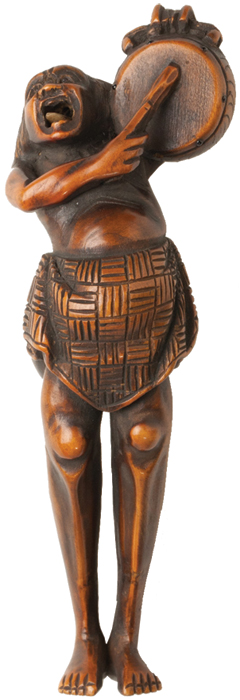Technological sleuthing

Since Carnegie Museum of Art acquired the Teenie Harris Archive in 2001, its caretakers have been working feverishly to identify the people and places captured in as many of the 80,000 photographic negatives as possible. Harris documented African-American life in Pittsburgh from the 1930s to the 1970s, so many of his subjects are now in their 80s and 90s, which makes the process of collecting their memories more urgent than ever. Enter Carnegie Mellon University’s Frank-Ratchye STUDIO for Creative Inquiry, now collaborating with the museum to use face detection and other advanced machine learning to expedite the process. The partnership devel- oped out of School of Art professor Golan Levin’s undergraduate Interactive Art and Computational Design class. Thanks to a National Endowment for the Humanities grant, Levin and his students are working on the open-source Teenie project with David Newbury, an enterprise software and data architect at the J. Paul Getty Trust. “This could completely change the game for us,” says Teenie Harris archivist Dominique Luster. “It could also put Teenie on the map as a leader in the museum and archive worlds if we can become a model for other photography collections around the world.”
February Free Days are back!
Enjoy a month of free, cultural fun across the city. Twelve Pittsburgh cultural attractions, including the four Carnegie Museums, are banding together to show some love to their members during February Free Days. On designated dates in February 2018, members of any of the Pittsburgh attractions can visit the other destinations for free: Pittsburgh Botanic Gardens, Feb. 3; Mattress Factory, Feb. 3; the four Carnegie Museums, Feb. 4; Children’s Museum, Feb. 9, extended hours 10 a.m.–7 p.m.; Pittsburgh Zoo & PPG Aquarium, Feb. 10; Sweetwater Center for the Arts, Feb. 15; Phipps Conservatory, Feb. 17; Westmoreland Museum of American Art, Feb. 24; and Heinz History Center, Feb. 25. Members get free admission for up to four people, 10 percent discounts on store purchases and new memberships, and a chance to win a membership to every participating attraction. (Dates are subject to change.)
The very first purchase made by Andrew Carnegie for his Pittsburgh museums wasn’t a dinosaur bone. It was the coffin of an unnamed Egyptian chantress from Dynasty 21, given accession number 1.1 in 1896. Its current home is the Museum of Natural History’s Walton Hall of Ancient Egypt, which opened in 1990.
Curiosity en route
In Renaissance Europe, cabinets of curiosity were eclectic, sometimes odd mishmashes of artifacts and fossils, art objects and religious relics. When Carnegie Museums was invited to create an exhibit for the Pittsburgh International Airport—one that puts a spotlight on the wonder- ful diversity of the Carnegie Museums’ collections—its Innovation Studio had a brainstorm: Why not use technology—namely, 3D reproduc- tions—to create a modern-day cabinet of curiosity, curated by Pittsburghers themselves? Dubbed “Curious Collections” and located in Concourse A, the interactive display features objects from across the four Carnegie Museums, chosen by a host of famous and non-famous locals, including WTAE-TV news anchor Sally Wiggin, Carnegie Mellon Dean of the School of Computer Science Andrew Moore, museum security guard Rodney Smith, Pittsburgh Post-Gazette columnist Tony Norman, and drag performer and recording artist Sharon Needles. Curious travelers can now explore some of Carnegie Museums’ treasures simply by stepping in front of the exhibit’s screens, each revealing a collection of fascinating objects.

“I think in the final analysis that we shall overcome, because what we did is … we left a harvest that generations to come [will] reap. That they have not yet plowed. That they have not yet harvested.”
– Singer and civil rights activist Harry Belafonte this past October at Carnegie Music Hall. He spoke as part of 20/20: The Studio Museum in Harlem and Carnegie Museum of Art.
A bigger, bolder, better moviegoing experience

The future of cinema has arrived, and it’s at the Science Center’s new Rangos Giant Cinema: a 70-foot-tall Certified Giant Screen—the largest in Pittsburgh—along with 45 advanced Dolby surround-sound speakers (most systems have 14 speakers), and dual 4K laser digital projectors. Sound kind of high-tech? That’s because it is. Moviegoers will be totally immersed in the action, with most films screened in 3D. There’s comfort- able seating, a new concession stand, and a gourmet popcorn topping bar, too. The Rangos’ award-winning opening film, Amazon Adventure 3D, is the true story of explorer Henry Bates’ 11-year journey through the Amazon rainforest. And, of course, there’s Star Wars: The Last Jedi in 3D, opening on December 14.
Museum of Art director steps down

Lynn Zelevansky, the former Henry J. Heinz II Director of Carnegie Museum of Art (CMOA), stepped down in September after eight fruitful years in Pittsburgh. During Zelevansky’s tenure, the museum presented the critically successful 2013 Carnegie International and launched the Hillman Photography Initiative, an ambitious incubator for the exploration of the photographic image. Zelevansky also co-organized two major touring retrospectives that exhibited at the museum: Paul Thek: Diver, in partnership with the Whitney Museum of American Art, and Hélio Oiticica: To Organize Delirium, with the Whitney and The Art Institute of Chicago. “Carnegie Museum of Art is a great institution, and I’m extremely proud of the many significant contributions we’ve been able to make over my eight years here,” Zelevansky said. “I am most appreciative of the hard work of the fabulous CMOA team and I wish everyone the best of luck going forward.” The museum’s deputy director, Sarah Minnaert, and chief curator, Catherine Evans, are serving as interim co-directors while the search for a new director is underway.
Receive more stories in your email
Sign up

